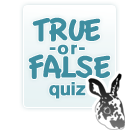Rabbit feet were designed to sit on grass and soft earth, allowing their toes and claws to sink into the ground and providing cushion and support for the foot. Unfortunately, it’s difficult to replicate this surface indoors.
Sitting on a hard surface causes the toes and the front part of the foot to lift slightly, shifting the weight to the heel (hock) of the foot, and applying pressure. The heel is not intended to support a rabbit’s weight, so pressure sores can develop. Wire cage flooring and most types of carpet are abrasive to a rabbit’s feet.
Many rabbits develop a small, calloused area at the tip of their heel under the flap of fur. When this area becomes bare, red, or inflamed, there is cause for concern.
Other factors to consider:
• Long or overgrown claws prevent the foot from staying close to the floor and add pressure to the heel – keeping the claws cut short helps prevent the foot from lifting while standing.
• Rabbits with immobility problems or spinal injuries may hop ‘flat footed’ and may not use their toes as their main weight support.
• Some rabbits sit with their back legs too far forward, applying more weight to the hock area.
Advice from a vet
Occasionally, you will see a rabbit with sores on their back feet by the heel or ankle. These can vary from mild calloused-appearing sores to severe ulcerated, infected, and swollen lesions. What are they? Where do they come from? How do we successfully treat them? And more importantly how do we prevent them?
Sores can occur on one or both rear feet and on the front feet, however, the front feet aren’t typically affected.When sores result in severely ulcerated lesions, secondary bacterial infections can occur.
Sore hocks, also known as ulcerative pododermatitis, usually develop from management and environment-related problems, such as:
1. Soiled or wet bedding.
2. Abrasions from flooring.
3. Excessive body weight causing a sedentary behavior.
4. Small cages that restrict movement.
5. Abrasions from thumping.
Early lesions show up as areas of redness and thinned fur on the bottom of the hock. They can progress to raw, ulcerated sores with scabs. Weeping sores and pus are present with secondary bacterial infections. Severe lesions can cause lameness, reluctance to move, unwillingness to eat, and depression.
How do we treat them?
1. Correct any management and environment-related problems – this is critical!!!
2. Cleaning the wounds with an antibacterial soap and application of antibiotic cream if infected.
3. Applying topical astringents (such as calamine lotion or epsom salts) daily until wounds appear dry.
4. Protect wounds with sterile soft padded bandages.
5. Oral antibiotics if the infection is severe. If your rabbit is on antibiotics, than ensure he/she is also on probiotics such as lactobacillus found at health food stores.
Unfortunately healing usually takes a long time therefore daily treatment is necessary. That’s why I prefer to prevent sore hocks rather than treating them!!!
How we prevent them?
Always remember that an ounce of prevention is worth a pound of cure! If wire flooring is used in the cage, make sure it is smooth, nonabrasive, and sufficiently wide to prevent abrasions. Soft, dry bedding, such as hay or several layers of newspaper should be provided in one area of the cage. Cages should be clean and large enough to allow free movement. Check the feet and hocks periodically for signs of inflammation. Finally, if you start to see these lesions make sure you get your veterinarian to examine and help you in treatment of your fuzzy, fluffy bunny!
Dr. Shawn Tucker,
Thames Road Veterinary Clinic
Exeter, Ont.
Carrie’s Experience
While changing Bailey’s litter box one day, I noticed drops of blood on the floor of her cage. A quick examination showed the heels of her feet were cracked and bleeding. She didn’t appear to be in pain, she was still hopping and eating as usual.
Bailey, a Holland Lop, regularly gets matted fur on the bottom of her feet. The matted fur forms on the middle of her foot, forcing her to roll back onto her heel. She’s always had pink calluses, but this was the first time the skin had broken.
The floor of Bailey’s cage is thin wood paneling covered with linoleum. She has sheepskin as a resting area but unfortunately, I’d taken it out to wash it a few days earlier and had forgotten to replace it. To help ease the situation, I removed any matted fur from her feet and gave her an extra thick padding of sheepskin to rest on. I switched her litter from woodstove pellets to Carefresh because it’s softer and stays cleaner when wet. I also increased her litter box changes to twice a day to prevent her from sitting in wetness.
Severe cases of sore hocks can affect the bone and can be very serious, so I took Bailey to a veterinarian to be checked out, and thankfully, her feet weren’t infected. She didn’t require pain medication, but we applied Chlorhexidine solution twice a day. The sores were not severe enough to require bandaging.
Occasionally her sores cracked open again for a couple of weeks but eventually healed over. We were lucky because some rabbit’s sore hocks take months or even years to
heal.
Rachelle’s experience
I currently have six bunnies, two are Mini-Rexes (Sadie and Ryleigh) and one is a Flemish Giant (Tyesin), which are two of the worst breeds for developing sore hocks.
In the rabbits’ cages (which I built myself) there is an area covered in linoleum where their food/water and litter boxes are. There is also a loft/sleeping area, where their bedding is. There are no areas in their cages where they stand on wire so I was really surprised when my kids developed sore hocks.
I’ve since learned that the Rex breed develops sore hocks easily because the fur on their feet is quite thin; just moving around on any surface can cause irritation. I find that even though I layer Sadie and Ryleigh’s bedding they still have developed calluses.
Tyesin, the Flemish Giant, weighs 25 pounds and has had several bad cases of sore hocks. Because of his weight, Tyesin is prone to feet irritation, fur matting, and ultimately, sore hocks.
What I find works best is to soak a face cloth in lukewarm water and wrap it around his feet while he sits on my lap. This way we have a little one-onone time and it soothes his feet at the same time. It also washes off any debris and loosens the skin to allow me to work with it. I pluck the matted fur off his feet to get at the skin and treat the problem areas. As the feet are very sensitive, this is a delicate process -having the bunny calm is a must. Talking to the bunny in a soothing voice (and being calm yourself!) is important. If I touch a sensitive part, I stop for a few seconds and use a calm voice to reassure the bunny.
After I soak Tyesin’s feet and clean away any debris, I apply Savlon cream with a Q-tip. Savlon cream is an antiseptic cream and does not sting. I wait a few minutes before I let him down – otherwise, I’d have cream on the floor and not on Tyesin!
I did wrap Tyesin’s feet once but he ripped the wraps off, so I would not recommend this method. Depending on your rabbit’s personality, you will have to make a judgment call.
Tyesin still has to have the matted fur plucked from his feet, which I usually do when I brush him. His feet have developed thicker calluses and the fur is beginning to grow back. However, because of his size, sore hocks will always be a concern.
A final note:
Be cautious applying topical medication at home without veterinarian advice. Some ointment including herbal remedies, may be toxic if ingested or cause tissue damage.

